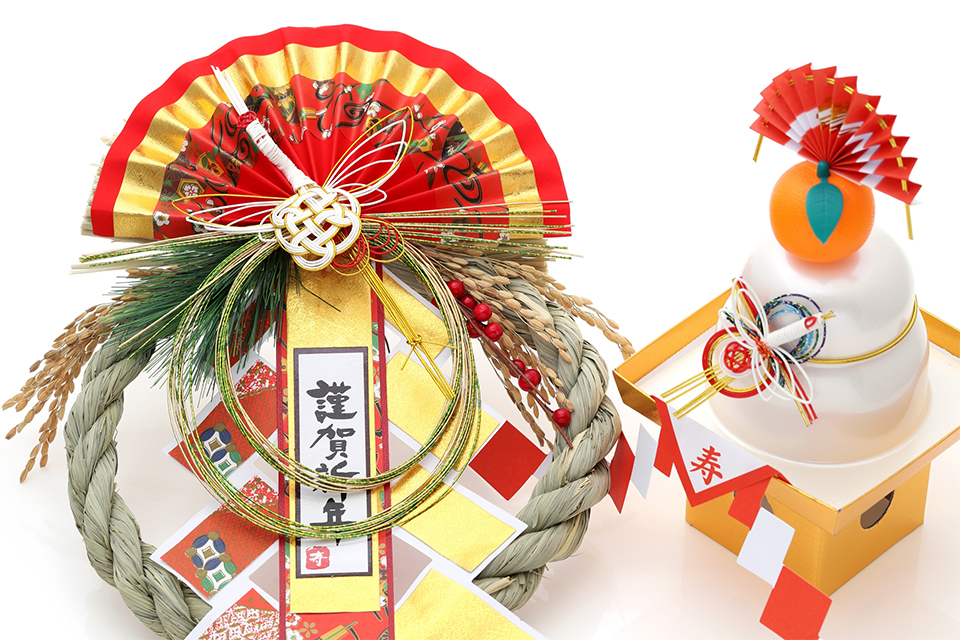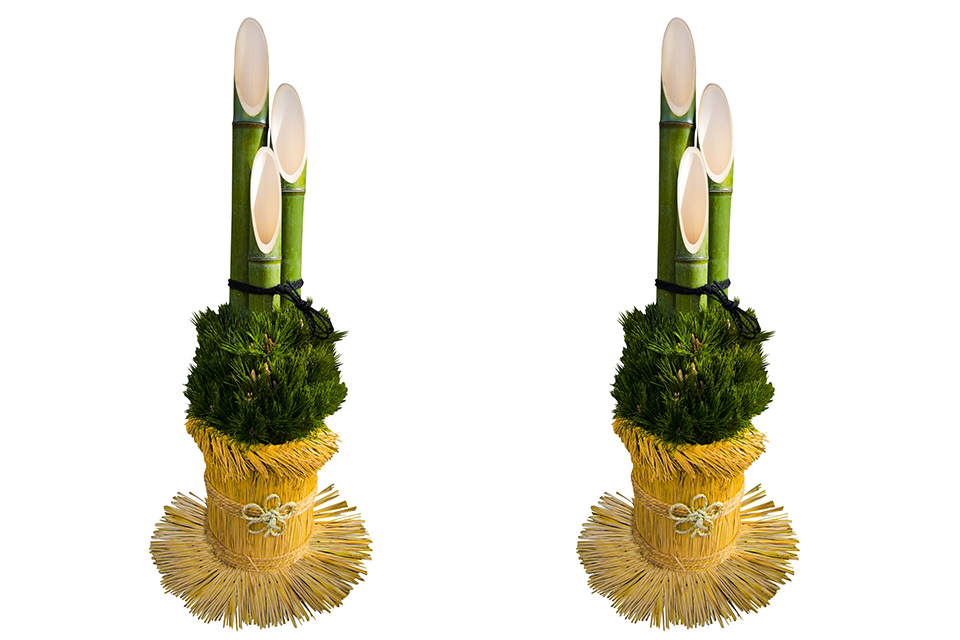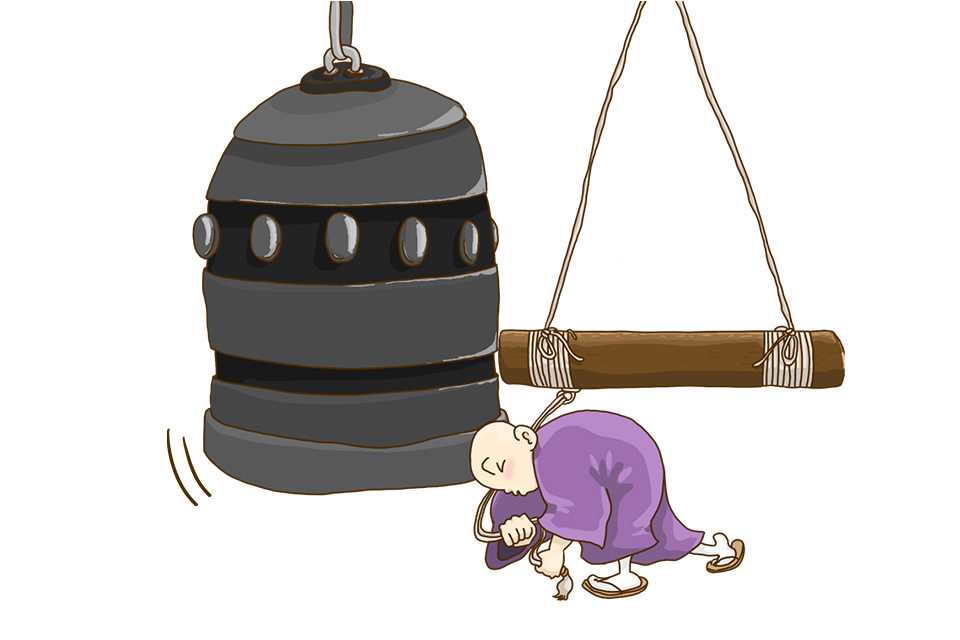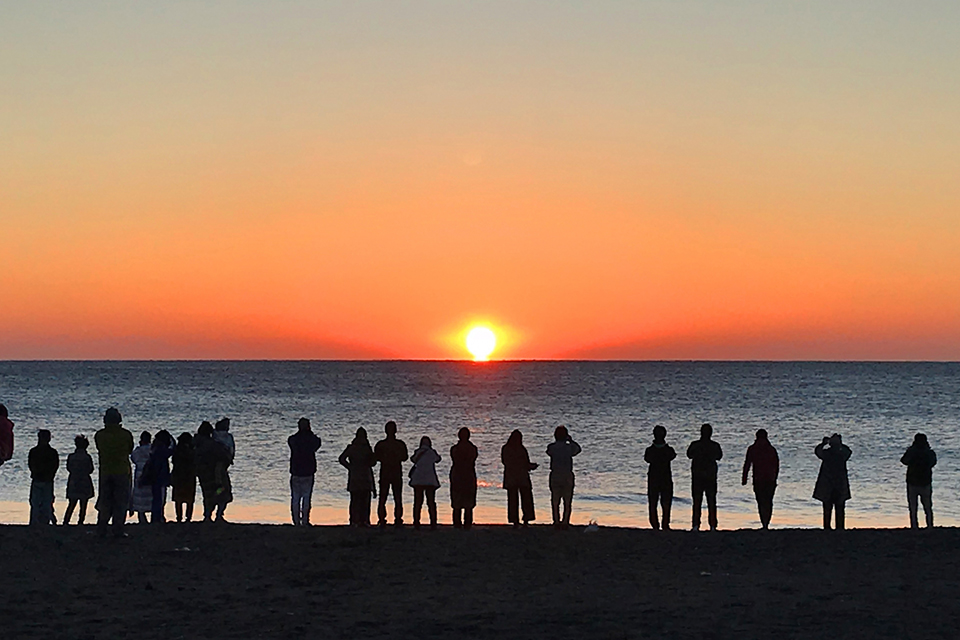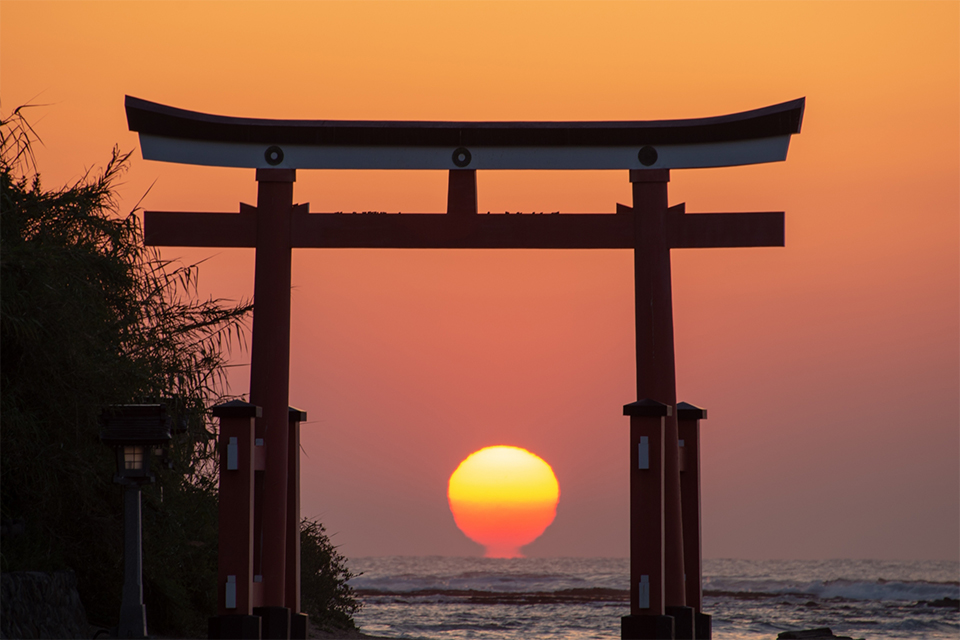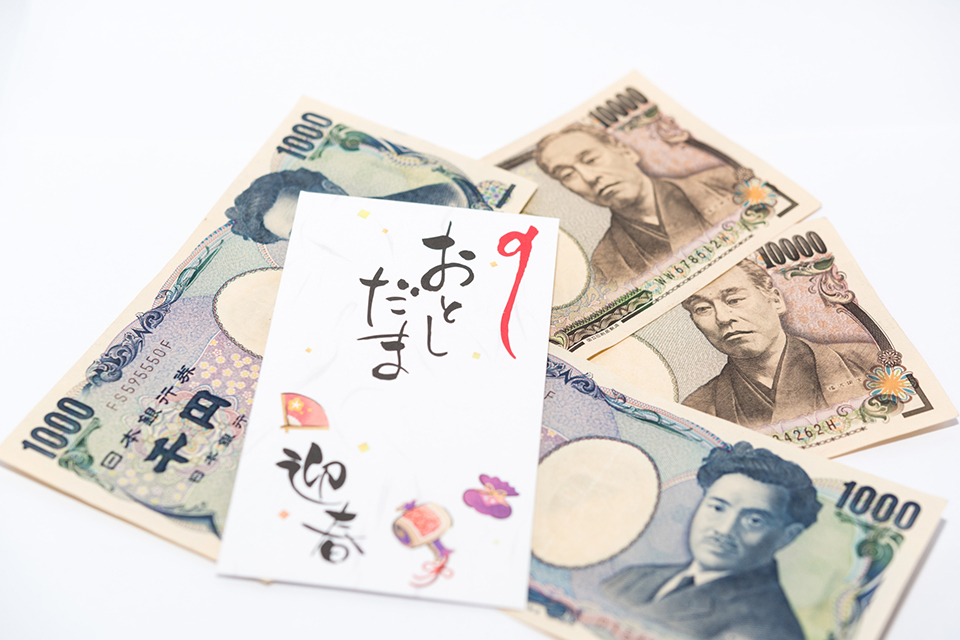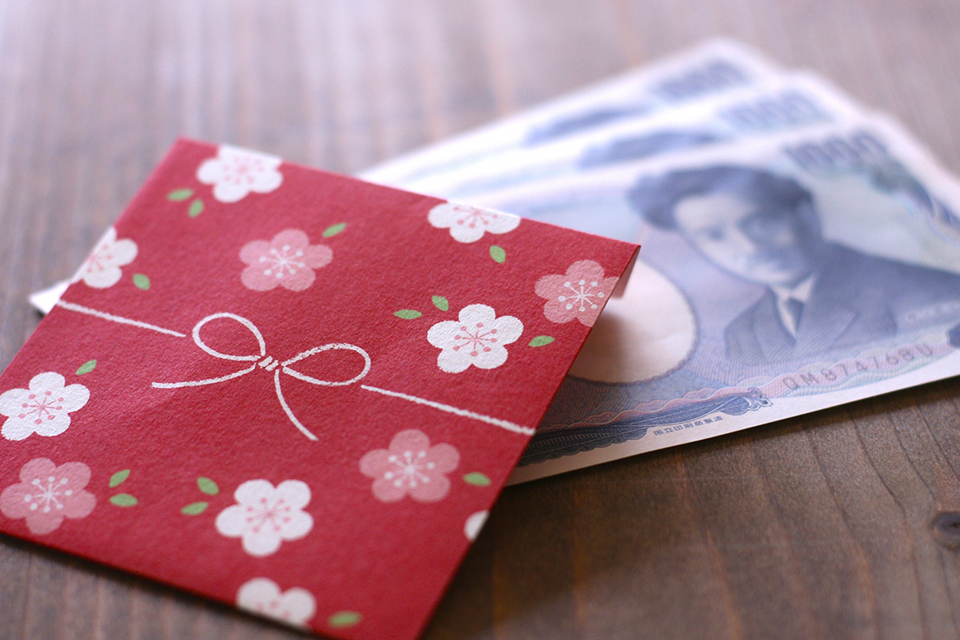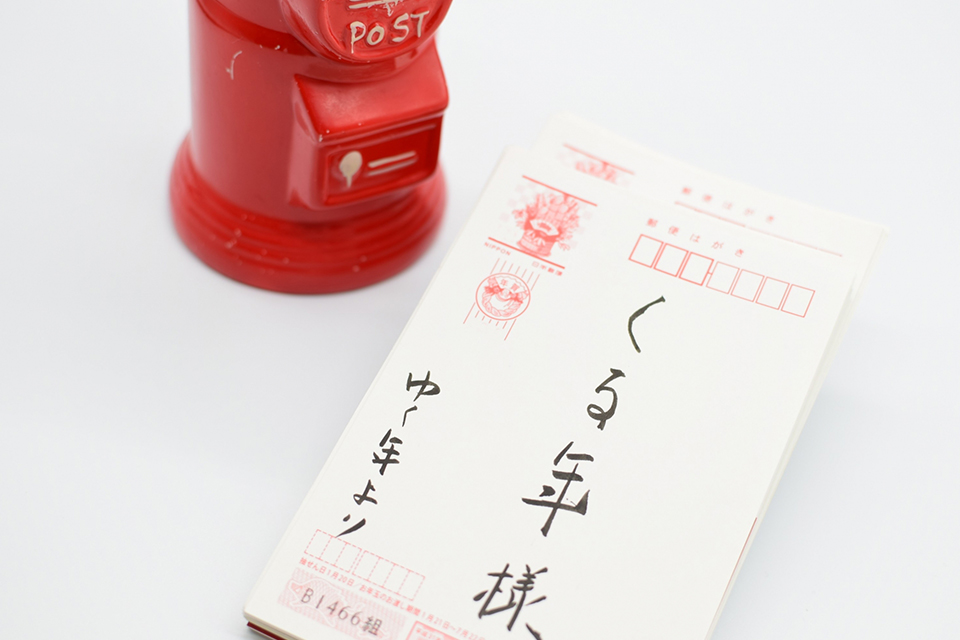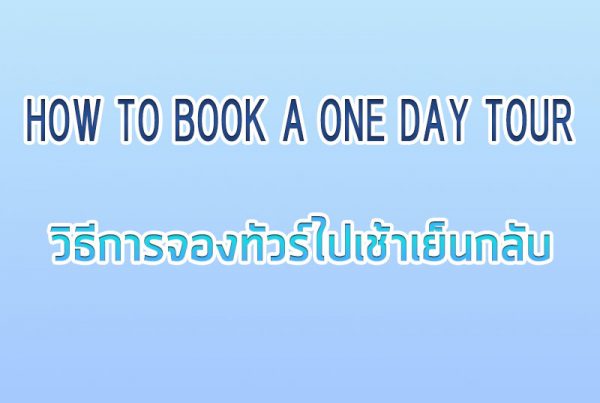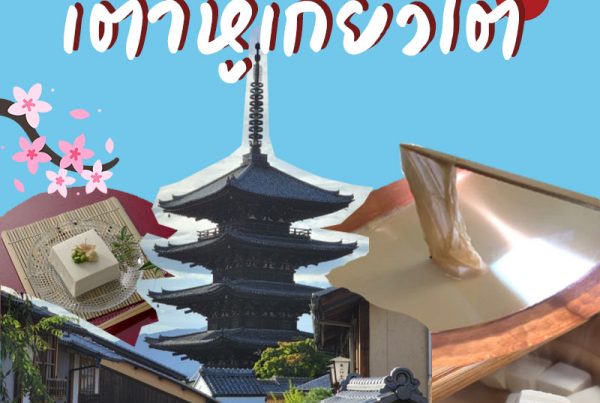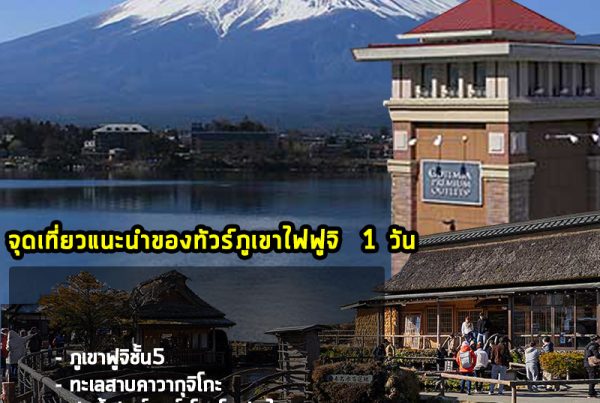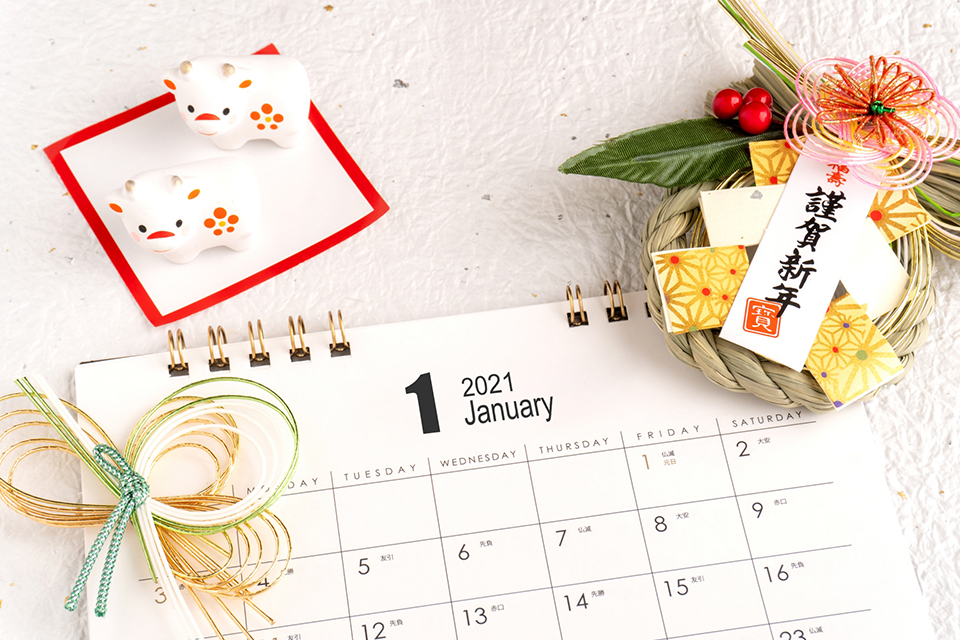
1. การประดับตกแต่งในช่วงปีใหม่ (正月飾り: Shogatsu Kazari)
เมื่อใกล้จะถึงวันขึ้นปีใหม่ของทุกปี คนญี่ปุ่นจะมีการทำเครื่องหมายเพื่อเตรียมต้อนรับเทพเจ้า “Toshigami-sama” เข้ามาในบ้านในวันขึ้นปีใหม่ ที่เชื่อกันว่าเทพเจ้านั้นจะนำพืชผลและสุขภาพที่ดีมีความสุขมาสู่ครอบครัวตลอดทั้งปี โดยทั่วไปคนญี่ปุ่นจะมีการประดับประดาตกแต่งตู้แท่นบูชาเทพในบ้านและตรงทางเข้าหน้าบ้าน จุดประสงค์ของการตกแต่งบ้านของคนญี่ปุ่นเพื่อแสดงให้เทพเจ้าประจำปีเห็นว่าเป็นสถานที่ศักดิ์สิทธิ์ที่เหมาะสำหรับต้อนรับเทพเจ้านั่นเอง
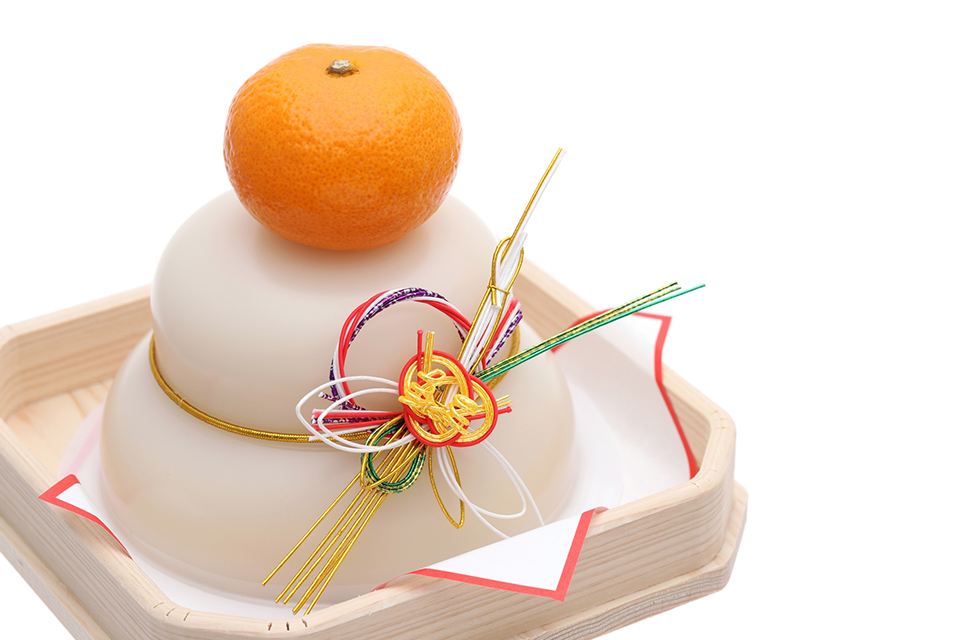
คางามิ โมจิ (鏡餅 : Kagamimochi)
ของประดับตกแต่งตู้แท่นบูชาในบ้านสำหรับต้อนรับวันขึ้นปีใหม่ ที่ทำออกมาเพื่อบูชาเทพเจ้าแห่งวันปีใหม่ Kagamimochi คือ โมจิ ที่ปั้นเป็นรูปกลมแบนมีสองลูกสองขนาดวางซ้อนกันอยู่(เป็นตัวแทนของพระจันทร์ และ พระอาทิตย์) และข้างบนวางด้วยผลส้มที่ชื่อไดไดจะทำการตั้งไว้ภายในบ้าน เพื่อถวายแด่เทพเจ้าในเทศกาลปีใหม่ จากนั้นเมื่อถึงวันที่ 11 มกราคม ซึ่งเป็นวัน Kagami biraki ชาวญี่ปุ่นก็จะนำโมจิทั้งสองลูกมาทาน เพื่อเป็นสิริมงคลของคนในบ้านตามความเชื่อว่า จะช่วยให้มีอายุให้ยืนยาว
คาโดมัทสึ (門松 : Kadomatsu)
ของประดับตกแต่งบ้าน ในช่วงปีใหม่ของญี่ปุ่นแบบดั้งเดิม เรียกว่า “Kadomatsu” จะวางอยู่เป็นคู่ที่ทางเข้าด้านหน้าที่สองฝั่งของ ประตูบ้านหรืออาคารสำนักงาน เพื่อที่จะต้อนรับ วิญญาณบรรพบุรุษ หรือ เทพเจ้าของการเก็บเกี่ยวและต้อนรับเทพเจ้าแห่งวันปีใหม่ ที่จะนำความสุข และความโชคดี นำสิ่งดีๆมาให้ในปีใหม่ คาโดมัสซึ จะทำจากไม้ไผ่และกิ่งสน โดยการนำต้นไผ่สามต้นมัดรวมกัน แล้วตัดในแนวเฉียงโดยใช้ใบไผ่พันไว้รอบๆหรือ อาจจะเพิ่มเติมสิ่งมงคลอื่นเข้าไป ตามแต่ความนิยมของแต่ละท้องถิ่น
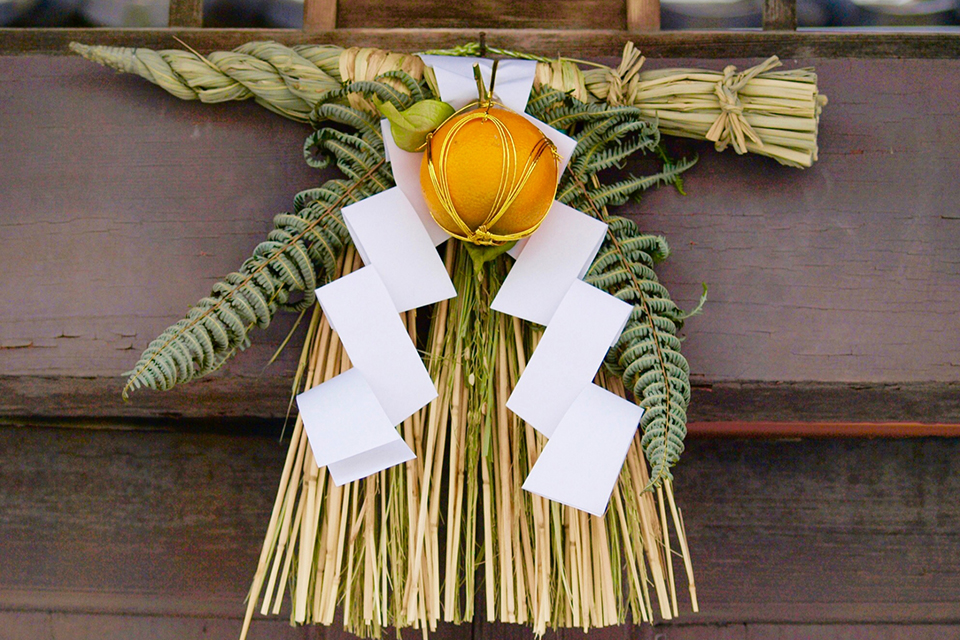
ชิเมะ คาซาริ (しめ飾り : Shime-kazari)
ชิเมะคาซาริ ประกอบด้วยเชือกศักดิ์สิทธิ์ ทำด้วยฟางข้าวนำมามัดกันเป็นฟ่อนใหญ่ๆตามแบบชินโต โดยมีแถบกระดาษสีขาว ที่เรียกว่า ชิเดะ (Shide, 四手/紙垂) ห้อยเป็นพู่ประดับ ตกแต่งด้วย กิ่งไม้ รวงข้าว ส้มไดได กุ้งมังกร ใบเฟิร์น และอื่นๆ
– ส้มไดได ของญี่ปุ่น “daidai” (橙) เขียนด้วยตัวอักษรคันจิที่แตกต่างกัน (代々) สามารถแปลว่า “จากรุ่นสู่รุ่น” ซึ่งถือว่าเป็นลางที่ดี
– กุ้ง เป็นสัญลักษณ์มงคล ของการมีอายุยืน
– ใบเฟิร์น เป็นสัญลักษณ์ของความหวัง และ ความปรารถนาที่จะมีครอบครัวที่มีความสุขเพิ่มขึ้น จากรุ่นสู่รุ่น
ชาวญี่ปุ่นส่วนใหญ่จะนำ ชิเมะคาซาริ ไปแขวนไว้บนระเบียงหรือด้านนอกของประตูทางเข้าบ้านหรือประตูหลังบ้าน เพื่อเป็นสัญลักษณ์เปิดทางให้เทพเจ้าท่านได้ผ่านเข้ามา สำหรับบางบ้านที่นับถือ ศาสนาชินโตอาจจะประดับตกแต่งด้วยเชือกศักดิ์สิทธิ์ หรือชิเมะนาวะ (Shime-nawa, しめ縄)โดยเมื่อผ่านเทศกาลแล้ว บางคนจะนำ Shime-kazari ไปเผาที่วัด หรือ ศาลเจ้าและเก็บขี้เถ้า นำมาวางไว้หน้าประตูทางเข้าบ้านเพื่อขับไล่วิญญาณร้าย
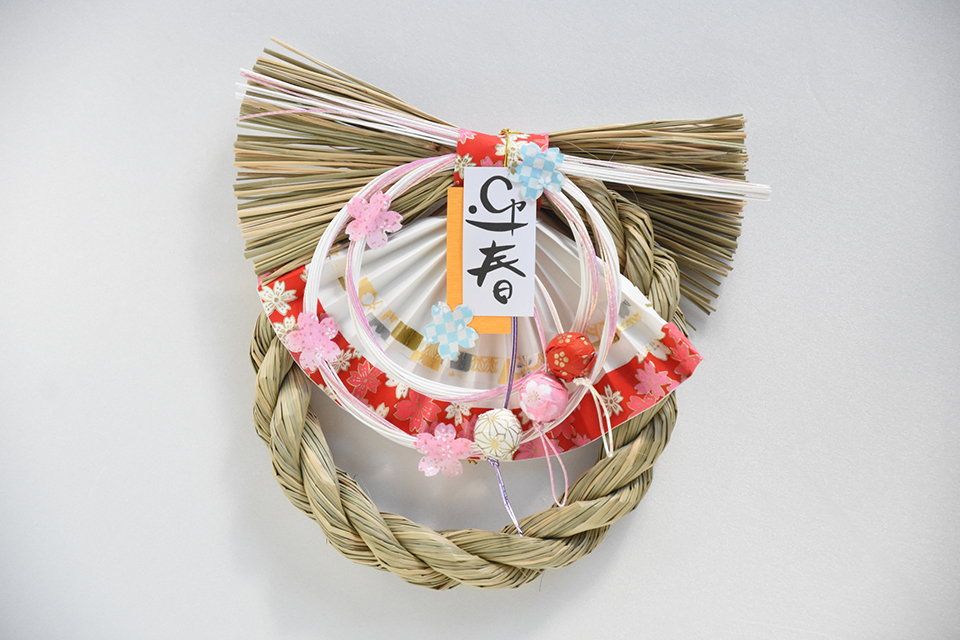
ชิเมะ คาซาริ จะมีรูปต่างแตกต่างกันไปตามท้องถิ่น
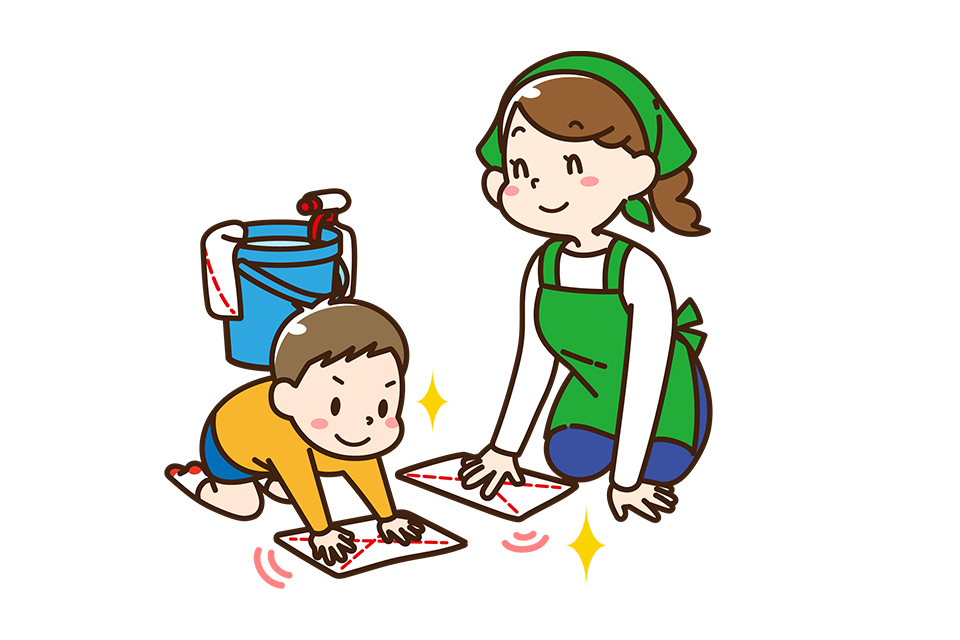
2. การทำความสะอาดใหญ่ของญี่ปุ่น “โอะ โซจิ” (大掃除 : Oosouji)
“โอะ โซจิ” การทำความสะอาดครั้งใหญ่ในเทศกาลปีใหม่ของญี่ปุ่น ประเทศในเอเชียตะวันออกโดยส่วนใหญ่เมื่อขึ้นปีใหม่ก็จะมีประเพณีที่คล้ายๆกัน คือการทำความสะอาด การทำความสะอาด มีความหมายตามความเชื่อแบบตะวันออกโดยที่วันส่งท้ายปีเก่า จะทำความสะอาดเพื่อปัดกวาดสิ่งสกปรกและ โชคร้ายที่สะสม ของปีที่ผ่านมา โชคร้ายทั้งหมดจะถูกกวาดออกไป ในช่วงวันขึ้นปีใหม่เพื่อเป็นการต้อนรับปีใหม่ที่กำลังจะมาถึง ชาวญี่ปุ่นจะเริ่มการทำความสะอาดบ้าน ในวันที่ 13 ธันวาคมของทุกปี นับเป็นวันแรกของการเตรียมตัวต้อนรับเทศกาลปีใหม่ เรียกว่า การทำความสะอาดครั้งใหญ่ คนญี่ปุ่นจะการทำความสะอาดบ้านเพื่อเป็นการต้อนรับปีใหม่ที่จะมาถึงโดยทุกหนแห่งทั่วญี่ปุ่น ก็จะมีการทำความสะอาดที่นอกจาก จะเป็นการปัดกวาดสิ่งสกปรกและ โชคร้าย ที่สะสมมาทั้งปี ยังนับเป็นวันชำระล้างจิตใจให้สะอาดบริสุทธ์อีกด้วยและในช่วงวันที่ 31ธันวาคม ก่อนถึงวันปีใหม่ จะเรียกวันนี้ว่า โอมิโซกะ (大晦日)ซึ่งในวัน โอมิโซกะ นี้จะมีการทำความสะอาดให้เสร็จ ภายในช่วงเวลากลางวันและ เมื่อถึงเวลากลางคืน ก็จะเป็นช่วงเวลาของการรอต้อนรับวันปีใหม่ที่จะมาถึงค่ะ
3. การตีระฆังในช่วงวันส่งท้ายปีเก่า Joya no Kane (除夜の鐘 : Joyano kane : Bell ringing)
ระฆังส่งท้ายปีที่ญี่ปุ่น เมื่อเข้าสู่คืนวันที่ 31 ธันวาคม ก็จะค่อยๆตีระฆังใหญ่ที่วัดจำนวน 108 ครั้ง ซึ่งเรียกว่า”ระฆังส่งท้ายปี” คืนก่อนวันขึ้นปีใหม่ ตามวัดทั้งประเทศญี่ปุ่นจะมีพิธีการตีระฆังเป็นจำนวน 108 ครั้ง โดยก่อนถึงเวลาขึ้นปีใหม่ จะมีการตีระฆังจนถึง 107 ครั้ง จนถึงเวลาเที่ยงคืนและเมื่อถึงเวลาเที่ยงคืน ของการเข้าสู่ปีใหม่ก็จะตีอีก 1 ครั้งเป็นครั้งสุดท้าย
ถือเป็นการขับไล่กิเลสชั่วร้าย 108 อย่างที่มีอยู่ในตัวมนุษย์ ซึ่งเชื่อว่าการตีระฆังจะช่วยล้างบาป และขจัดกิเลส ตัณหาได้ เพื่อจะได้ต้อนรับวันขึ้นปีใหม่ ด้วยจิตอันบริสุทธิ์
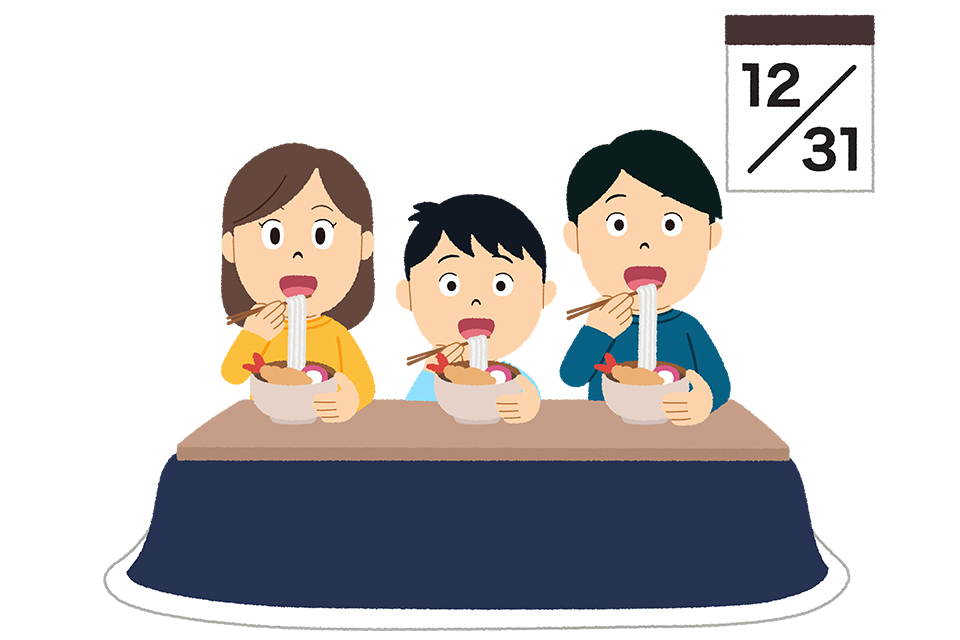
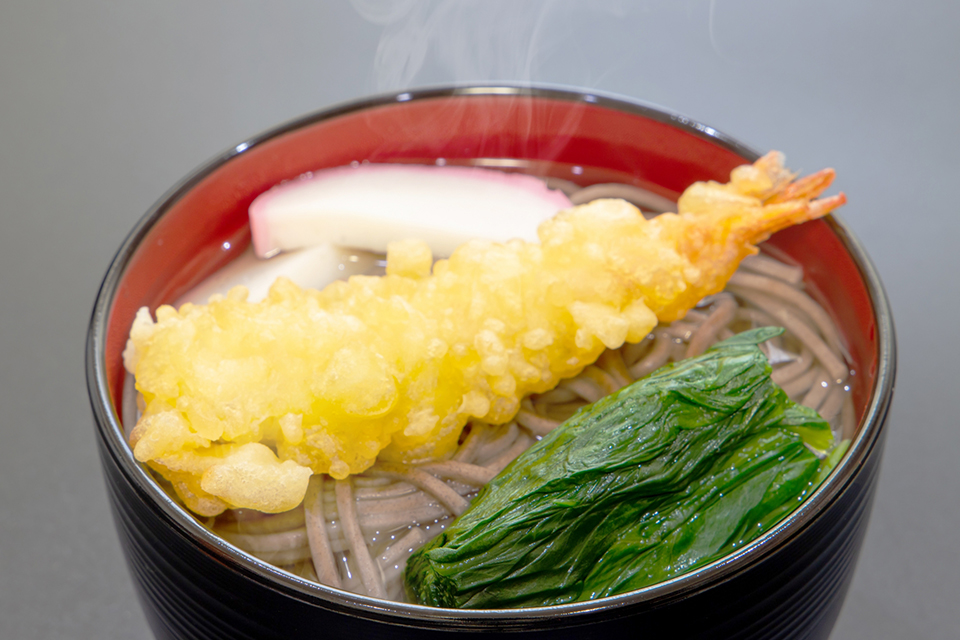
4. ประเพณีกินโซบะ ในวันสิ้นปี โทชิโคชิโซบะ (年越しそば: Toshikoshi Soba)
เป็นประเพณีที่มีมานาน นับตั้งแต่สมัยเอโดะ โดยจะนำโซบะมารับประทานกัน เพื่อความเป็นสิริมงคล และอธิษฐานขอพร “ขอให้มีชีวิตอยู่อย่างยืนยาว และแข็งแรง” อาจจะเนื่องจากเส้น โซบะ นั้นมีลักษณะเป็เส้นยาว จึงทำให้มีความเชื่อกันว่า เป็นการขอพรให้มีสุขภาพดีและมีชีวิตที่ยืนยาว เหมือนเส้นโซบะ โดยจะต้องทานให้หมดเกลี้ยง ก่อนเที่ยงคืน ถ้าหากกินข้ามคืน และทานไม่หมด สิ่งต่างๆก็จะหยุดชะงักลงจะไม่เป็นมงคล
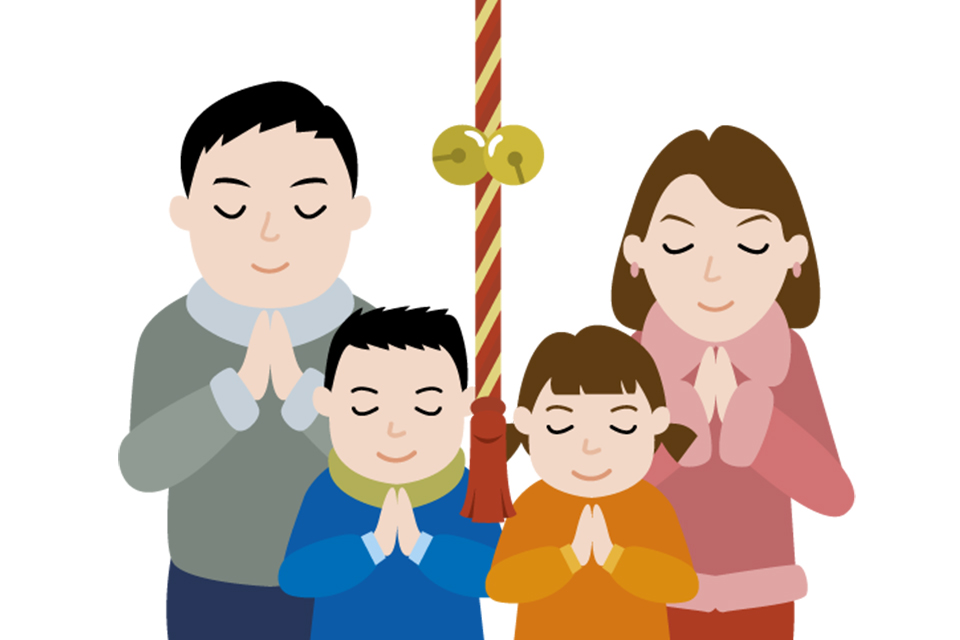
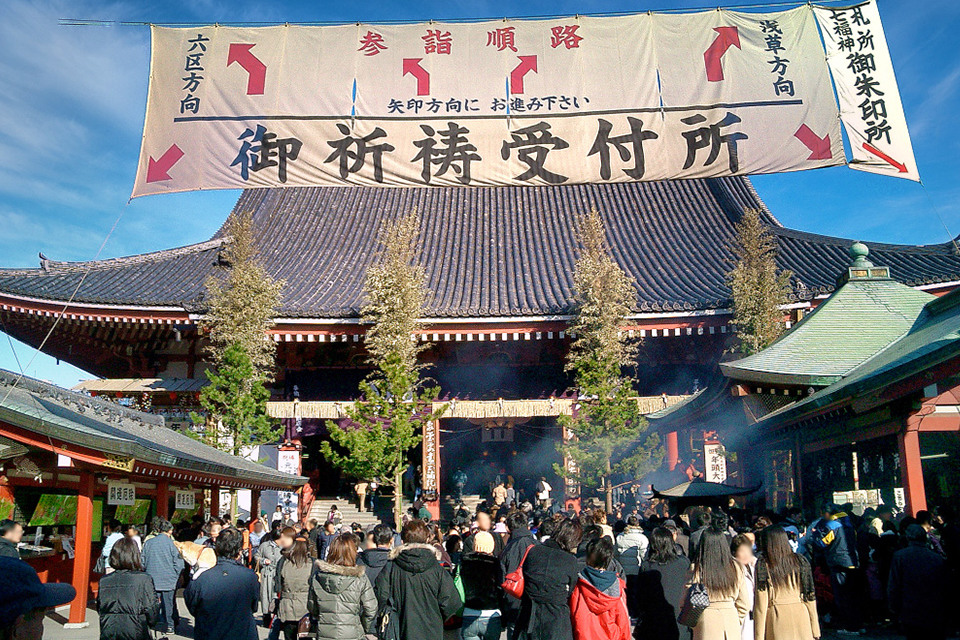
5. ฮัตสึโมเดะ Hatsu Moude (初詣)
เป็นคำเรียกการไปไหว้พระช่วงปีใหม่ของที่ญี่ปุ่น คล้ายๆคนไทยเราที่ไปไหว้พระช่วงปีใหม่ ตักบาตรทำบุญ คนญี่ปุ่นเองก็ทำเหมือนกัน แต่เค้าจะเริ่มกันตั้งแต่ช่วงดึกของวันที่ 31 ธันวาคมเลย ส่วนใหญ่ก็จะไปเข้าแถวรอกันตั้งแต่ดึก เพื่อให้ได้ไหว้กันตอนเช้าปีใหม่ แล้วปริมาณคนที่ไปนี่ก็ไม่ใช่น้อยๆ ถ้าเป็นวัดหรือศาลเจ้ายอดฮิต ต่อแถวกัน5-6ชั่วโมงเลยก็มี นอกจากไปต่อแถวไหว้พระปีใหม่ตอนกลางดึกคืนสิ้นปีแล้ว เทศกาลไหว้พระปีใหม่ของคนญี่ปุ่นก็จะยาวต่อเนื่องกัน 3 วันแรกของปีเลย นอกจากจะไปไหว้พระเพื่อขอพรแล้ว ก็จะนำโอมาโมริ (เครื่องราง) อันเก่าไปฝากที่ศาลเจ้าเพื่อทำลายและซื้อเครื่องรางชิ้นใหม่กันค่ะ
วิธีไหว้ขอพรที่ศาลเจ้า ก้มหัวสองรอบ ปรบมือสองรอบ และก้มหัวอีกรอบ ส่วนการขอพรที่วัดให้พนมมือไหว้พระตามปรกติค่ะ
วัดที่นิยมๆไปกันช่วงปีใหม่ ที่คนญี่ปุ่นเค้าก็ไปกันแบบติดท๊อปฮิต แล้วก็เดินทางไปได้ง่ายๆมีแนะนำอยู่ 3 สถานที่ค่ะ
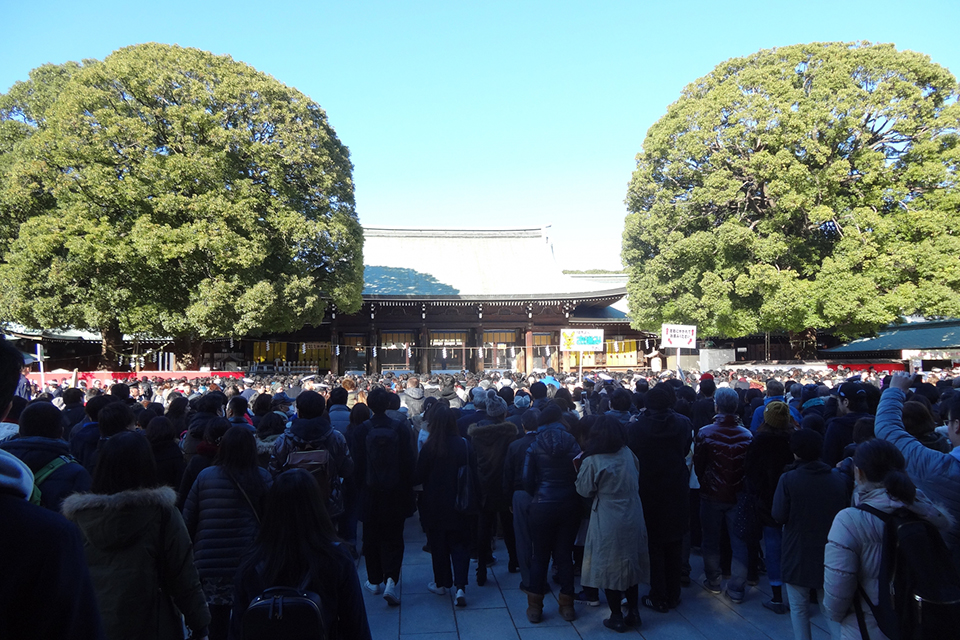
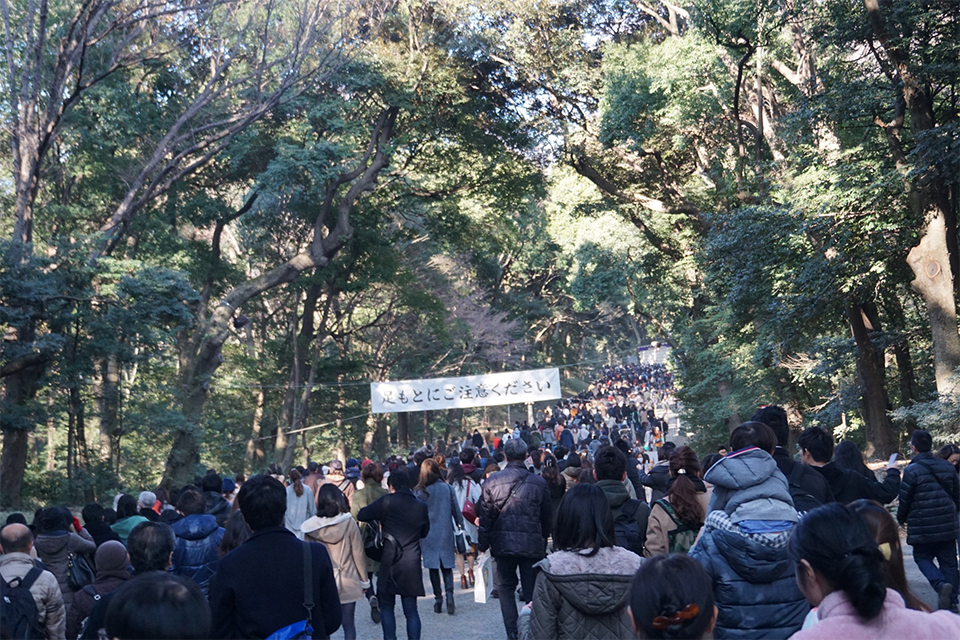
1.ศาลเจ้าเมจิ Meiji-jinku 明治神宮
ศาลเจ้านี้ถูกสร้างขึ้นในปี ค.ศ. 1920 เพื่อเป็นอนุสรณ์สถานแด่องค์จักรพรรดิเมจิและพระมเหสี “จักรพรรดินีโชเก็ง” และเป็นศาลเจ้าในญี่ปุ่นที่มีคนมาสักการะเป็นจำนวนมากที่สุดในช่วงเทศกาลปีใหม่ติดต่อกันมาเป็นเวลายาวนานถึง 34 ปี มีผู้คนเดินทางมาสักการะเป็นจำนวนมาก ประมาณ 3.1 ล้านคน เพื่อมาส่วนมนต์แรกของปี (hatsumode) นอกจากนี้ยังเป็นศาลเจ้าที่มีชื่อเสียงในการจัดงานแต่งงานแบบชินโตดั้งเดิม ที่สำคัญโด่งดังเรื่องขอพรด้านความรัก มีคู่รักหลายคู่มาจัดพิธีที่วัดนี้ด้วย
การเดินทาง
1.รถไฟสาย Yamanote ลงสถานี Harajuku ออกมาเลี้ยวขวา เดินมาหน่อยก็จะเจอกับทางเข้าศาลเจ้าเลยค่ะ
2.รถไฟใต้ดินสาน Jiyoda ลงสถานี Meiji-jinku mae ขึ้นมาก็เจอเลยเหมือนกัน
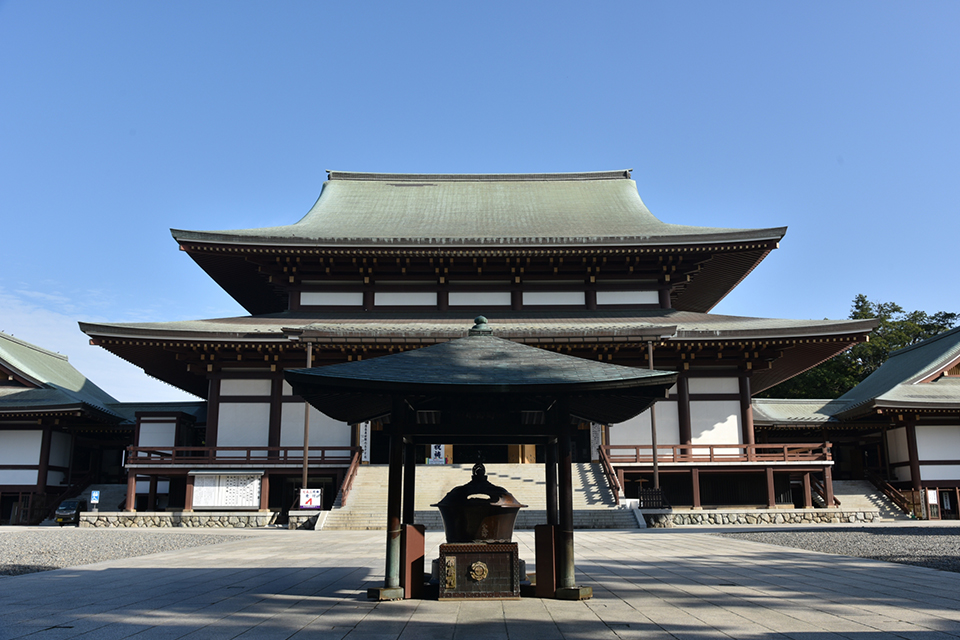
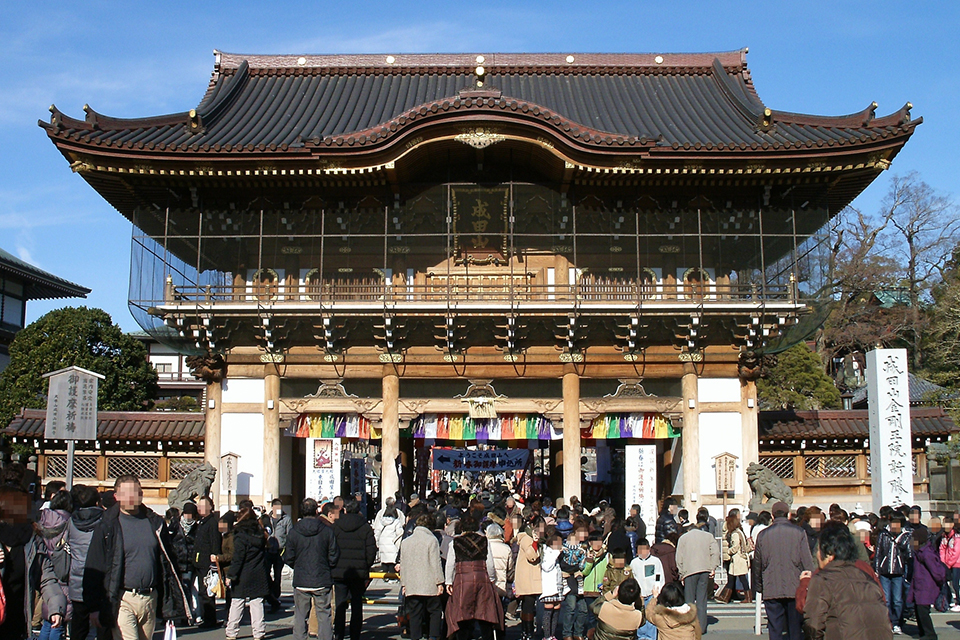
2.วัดนาริตะซัง ชินโชจิ Naritasan-shinshouji 成田山新勝寺
วัดประจำเมืองนาริตะ จ. ชิบะ เป็นวัดที่มีสถาปัตยกรรมสวยงาม ในวันขึ้นปีใหม่จะเต็มไปด้วยผู้คนที่มาขอพร ประมาณ 3 ล้านคน ถือว่าเป็นวัดยอดนิยมอีกที่ที่คนไปไหว้พระกัน เป็นอันดับ 2 รองจากศาลเจ้าเมจิเลยค่ะ ภายในก่อสร้างด้วยสถาปัตยกรรมพุทธแบบอินเดียที่ยังคงเอกลักษณ์ของศิลปะแบบญี่ปุ่นเอาไว้ ซึ่งในแต่ละปีจะมีนักท่องเที่ยวนิยมมาขอพรจากหลวงพ่อ “ฟุโดเมียว ”(เทพเจ้าแห่งไฟ) อันศักดิ์สิทธิ์ และขึ้นชื่อในเรื่องขอพรให้ปลอดภัยจากอุบัติเหตุต่างๆ จุดเด่นอีกอย่างคือ ประตูทางเข้าที่มีชื่อว่า โซมง ที่สร้างขึ้นในโอกาสเฉลิมฉลองครบรอบ 1,070 ปี
การเดินทาง
1.รถไฟสาย Narita ลงสถานี Narita
2.รถไฟสาย Keisei Main line แล้วลงสถานี Keisei-Narita
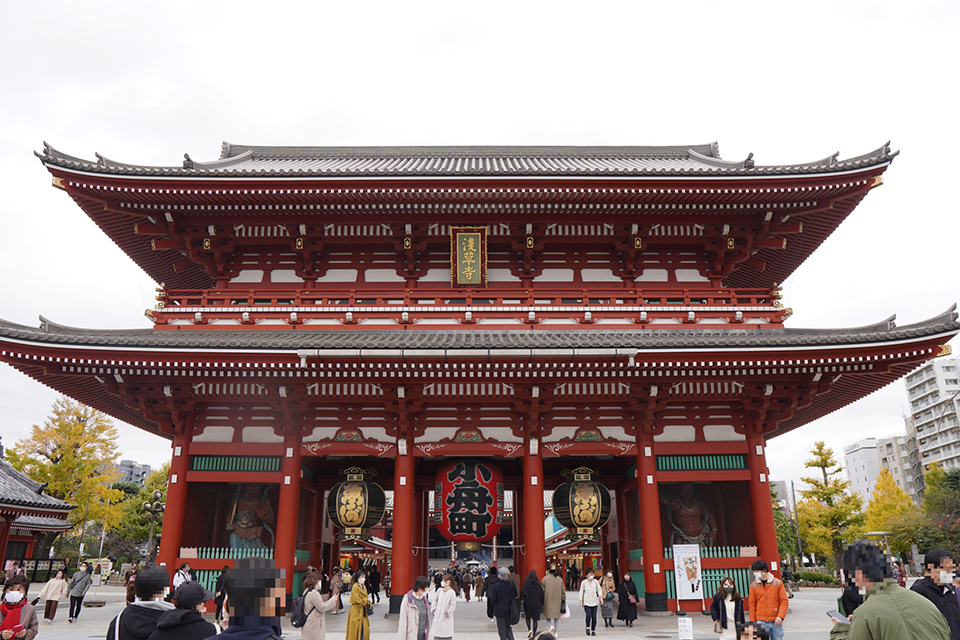
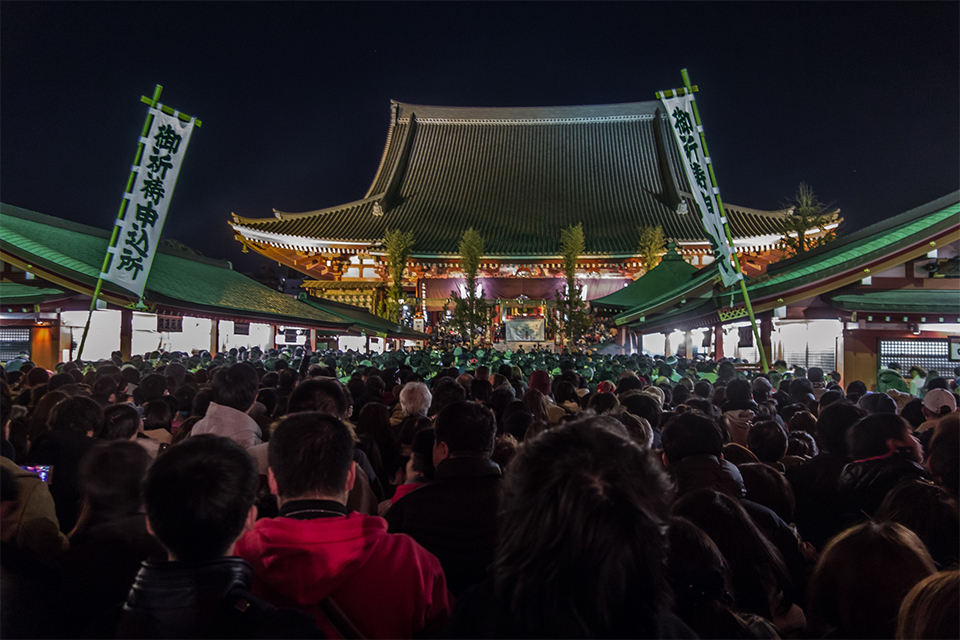
3.วัดอาซากุสะ Asakusa Dera 浅草寺
วัดอาซากุสะ วัดยอดนิยมที่นักท่องเที่ยวทุกคนคงเคยไปกันมาแล้ว ที่วัดนี้เองก็นิยมมาไหว้พระปีใหม่เหมือนกัน จำนวนคนที่มา ก็นับ 2.85 ล้านคนเลย
การเดินทาง
สามารถนั่งรถไฟได้หลายสาย แล้วลงสถานี Asakusa แล้วเดินต่ออีกนิดหน่อยก็ถึงค่ะ
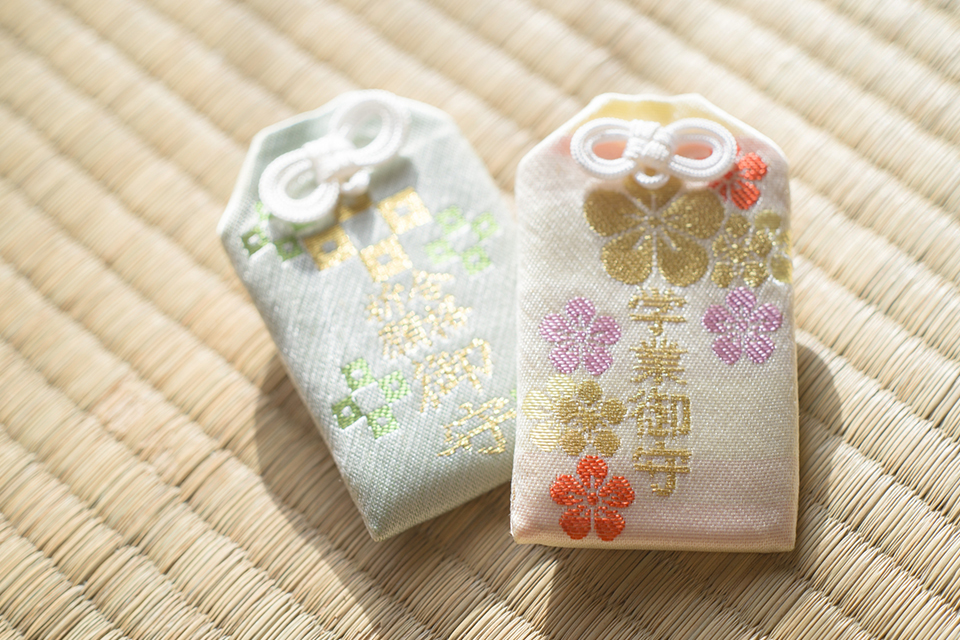
ส่วนเครื่องรางโอมาโมรินั้นก็มีหลากหลายแบบ เช่น
「家内安全 (ครอบครัวแคล้วคลาดปลอดภัย)」
「交通安全 (เดินทางปลอดภัย)」
「学業成就 (ประสบความสำเร็จด้านการเรียน)」
「合格祈願 (สอบผ่าน)」
「安産守り (คลอดลูกปลอดภัย)」
「身代わり守り (เครื่องรางตัวแทน)」เป็นต้น
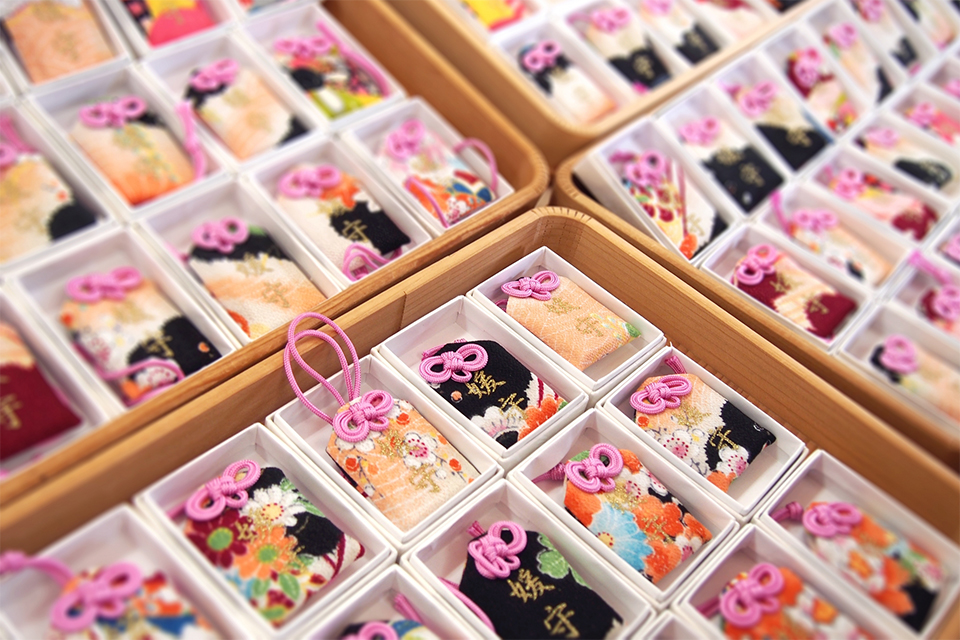
เราสามารถซื้อตามเรื่องที่ตัวเองปรารถนาได้เลยค่ะ
6. ชมพระอาทิตย์แรกของปี “ฮัตซึฮิโนะเดะ” (初日の出 : Hatsuhinode)
คนญี่ปุ่นเชื่อกันว่า การชมพระอาทิตย์แรกของปี มีพลังศักดิ์สิทธิ์ โดยประเพณีนี้เริ่มขึ้นมาในสมัยเมจิ (1868-1912) หลังจากไหว้พระขอพรกันเสร็จแล้ว ก็จะพากันเดินทางกลับ
โดยบางส่วน จะไปตาม ภูเขา หรือทะเล เพื่อดูพระอาทิตย์แรกของปีใหม่ในเช้าวันที่ 1 มกราคม และอธิฐานให้ครอบครัวมีความสุขและมีสุขภาพแข็งแรงตลอดปี
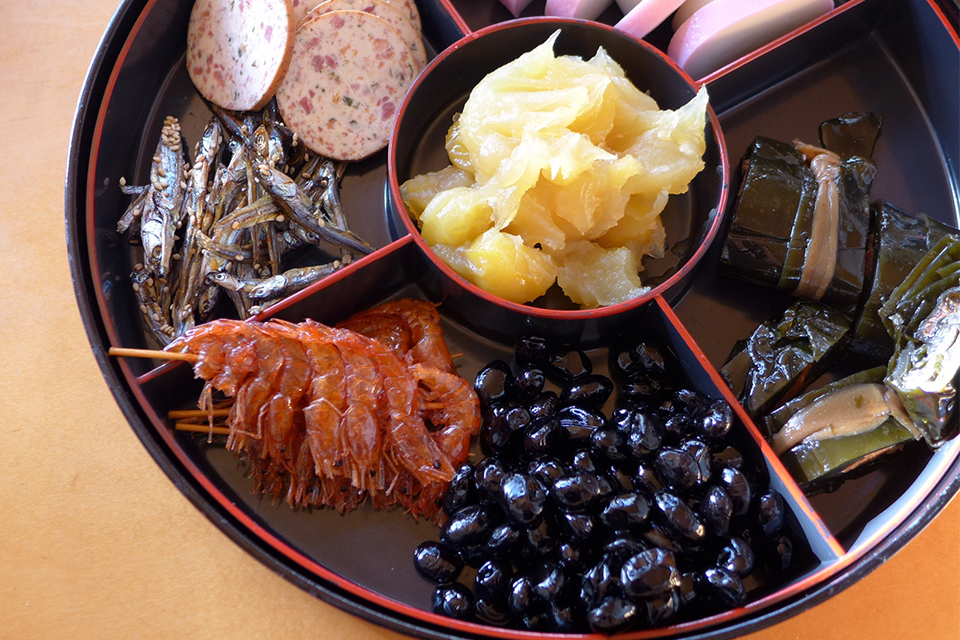
7. อาหารปีใหม่ของชาวญี่ปุ่น โอะเซะชิ-เรียวริ (お節料理 : Osechi-ryori)
อาหารสำหรับเทศกาลปีใหม่ในญี่ปุ่น เป็นขนบประเพณีที่มีมาตั้งแต่ยุคเฮอัง สามวันหลังวันขึ้นปีใหม่ ชาวญี่ปุ่นจะรับประทานอาหารในเทศกาลปีใหม่ ที่เรียกว่า “โอะเซะชิ-เรียวริ”
โอะเซะชิ-เรียวริ เป็นอาหารที่รับประทานในช่วงปีใหม่ของญี่ปุ่น ทำขึ้นมาเพื่อแสดงความยินดี ประเพณีโอะเซะชิ-เรียวริ นี้มีที่มาจากประเทศจีน และได้เข้ามาเผยแพร่ในประเทศญี่ปุ่น มีจำนวนอาหารมากมายหลายชนิด มีทั้งอาหารแบบแห้ง ซึ่งเป็นอาหารที่เก็บได้นานและแบบปรุงแต่ง และอาจจะมีการดองในเหล้าด้วย เป็นต้น ซึ่งในแต่ละภูมิภาคของญี่ปุ่น ก็จะมีอาหารที่แตกต่างกันออกไป อาหารที่อยู่ในโอะเซะชิ นั้นจะมีความหมายในทางมงคลต่างๆ เช่น
ถั่วดำเชื่อม = ขอให้มีสุขภาพสมบูรณ์และแข็งแรง
ไข่ปลาคาซุ หรือไข่ปลาแฮริ่ง = เพื่อขอให้มีลูกหลานมากมาย
รากบัว = เพื่อขอให้ปราศจากอุปสรรคต่างๆ
กุ้ง = ขอให้อายุยืนยาว
ปลากะตักแห้ง = ขอให้การเกษตรอุดมสมบูรณ์
เป็นต้น
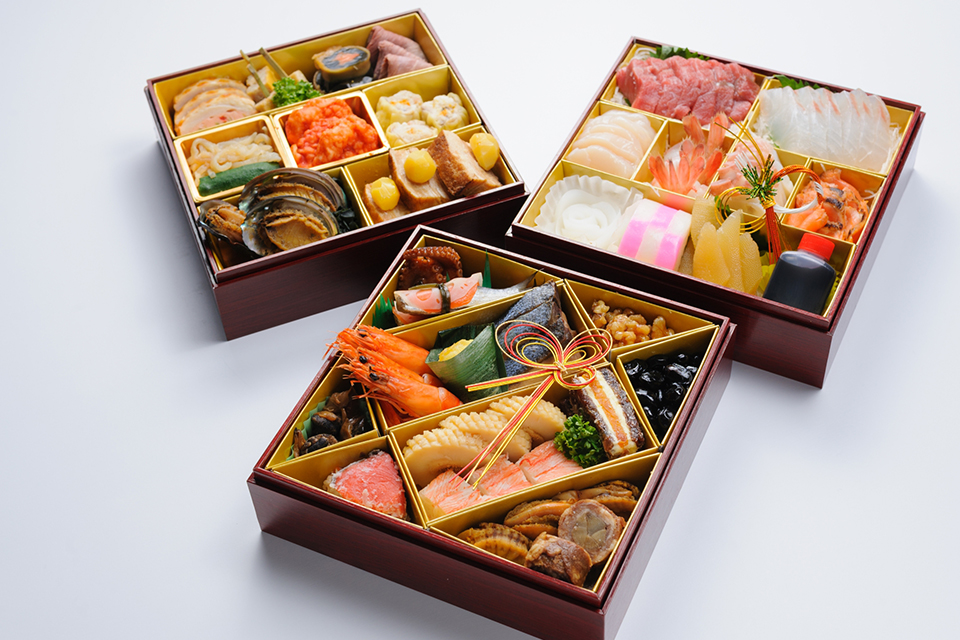
โอะเซะชิ จะถูกจัดวางอย่างสวยงาม อยู่ในกล่องสี่เหลี่ยมที่มีสามหรือสี่กล่องที่เรียกว่า จูบะโกะ (重箱) ซึ่งมีลักษณะคล้ายกับกล่อง เบนโตะ ซึ่ง จูบะโกะ นั้นจะถูกเก็บไว้โดยการซ้อนกัน ชาวญี่ปุ่นจะนิยมรับประทาน โอะเซะชิ-เรียวริ เป็นมื้อแรกของปีพร้อมกับครอบครัว
8. โอโทชิดามะ Otoshidama
เป็นการมอบเงินเพื่อเป็นการเฉลิมฉลองปีใหม่ ซึ่งเป็นธรรมเนียมที่ผู้ใหญ่จะใส่ซองให้เด็กๆเป็นค่าขนมซึ่งจะมากน้อยตามฐานะของแต่ละบ้าน
9. การ์ดอวยพรปีใหม่ เนนกะโจ Nengajo
คนที่มีอายุน้อยกว่าจะส่งการ์ดอวยพรปีใหม่ให้ผู้ที่มีอายุมากกว่าหรือผู้มีพระคุณเรียกว่า เนนกะโจ
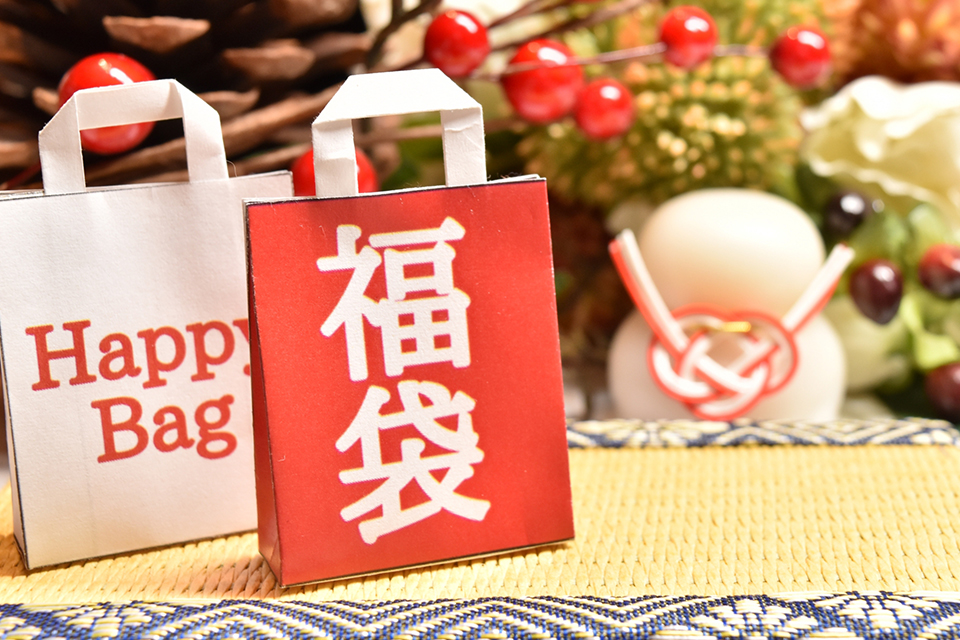
10.ถุงโชคดี
นอกจากนี้ตามร้านต่างๆในห้างสรรพสินค้า ในวันที่ 1 มกราคม ก็จะมีถุงโชคดีออกจำหน่ายมากมาย ซึ่งของในถุงก็จะคุ้มราคามากๆค่ะ บางร้านของในถุงมีมูลค่าถึง 30,000-40,000เยนแต่ขายเป็นถุงโชคดีในราคาเพียง 10,000 เท่านั้น ถือว่าคุ้มมากๆเลยล่ะค่ะ สายช็อปห้ามพลาดเลยนะคะ

